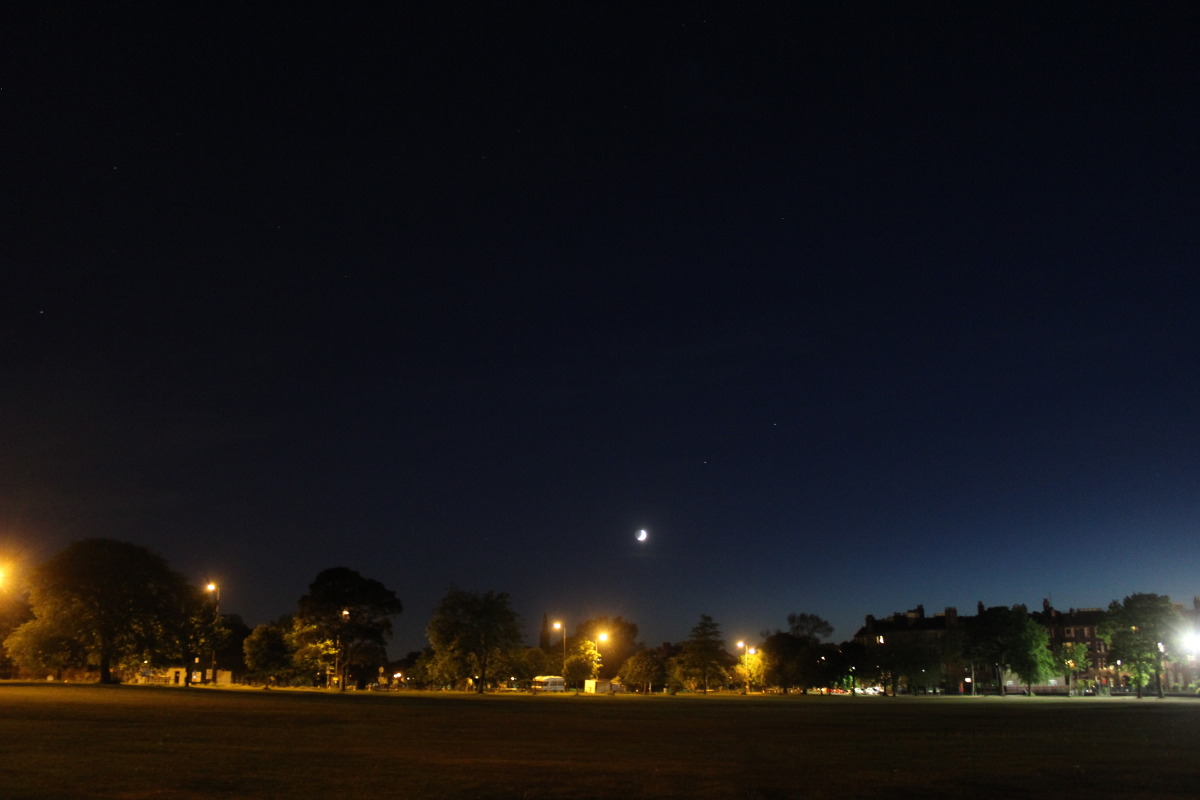Last night we had the most gorgeous velvet simmer dim in Leith.
I thought I would dip into the science of twilight because as it turns out, 1st June – 11th July is the gloaming time at 56˚ north!
For most of the year the night is bordered by different depths of twilight. “Astronomical Twilight” is when the sun is between 12 and 18 degrees below the horizon. At such times the presence of the sun is just about visible, but it has little effect, and is often unnoticed as the stars shine clearly. 1st June was the last day of the winter’s “Astronomical Twilight”: we have left this kind of night behind us. It is all lighter from here on out.
The darkest it will get in the coming weeks is something called “nautical twilight”, when the sun is between 6 and 12 degrees *below* the horizon. It is so named because it is just dark enough that one can read the brightest stars for navigation at sea, but if you have a good vantage point you’ll easily be able to see the sun’s glow beneath the horizon, waiting to rise to start the next day.
Either side of “nautical twilight” is the brighter “civil twilight”, bright enough to read by and certainly bright enough to drink and chat by. It’s when the sun has just set or is just about to rise, and is less than 6 degrees below the horizon. This time often barely feels like night at all.
Before us lie the brightest nights of the year. In Edinburgh they fall equally on 18-23th June. On each of these nights the sun is only below the horizon for 6 hours and 24 minutes and often it’s glow will be visible through all these hours. I once sat on the Mound with my sister all twilight, waiting for the first train from Waverley, watching the sun pass under the northern horizon towards the approaching dawn. It’s quite a special thing to witness.
“Dusk” is commonly defined as the darkest point of twilight, when twilight passes into dark night and the sun’s influence is lost. In this sense, it could be said that in our northern summer, since we have no dark night we have no dusk.
Edinburgh’s gloaming month will of course end. On 12th July the Astronomical Twilight will return, bringing back more of the stars, and the first real dusk belonging to the coming Autumn. “True night” will return on 9th August – for just a few minutes – a foreshadowing of its takeover of our sky across the Autumn so that by the winter more than half of our days are pitch black night with shining bright stars (when it’s not raining of course).
So for now stay up late. Sit about in the park. Find a pal and go on a night hike. Watch the dawn at the beach. Savour the light my northern friends!

Leave a Reply